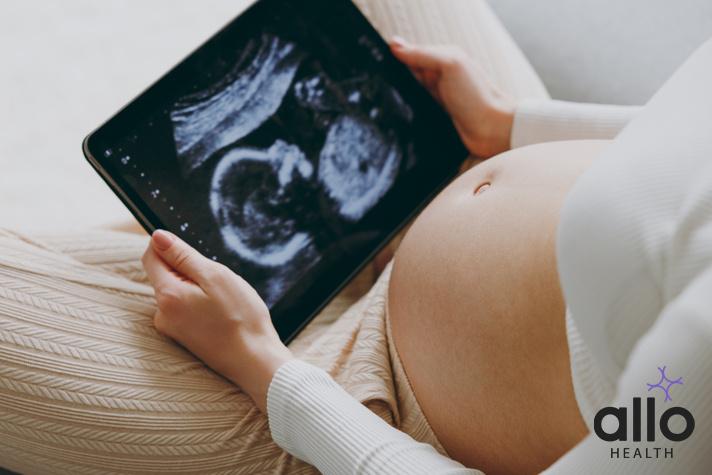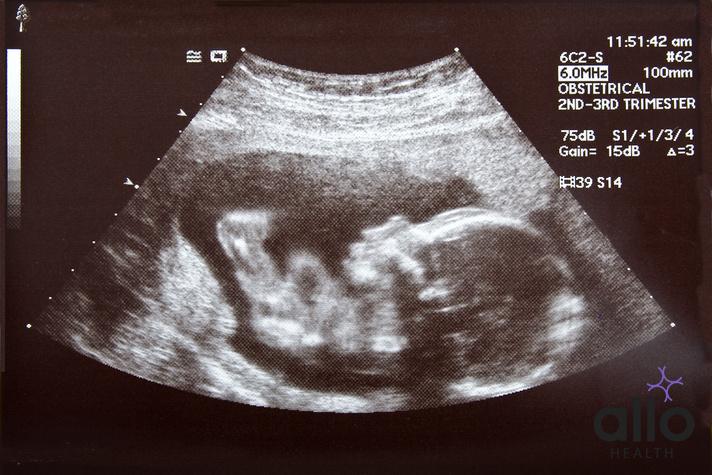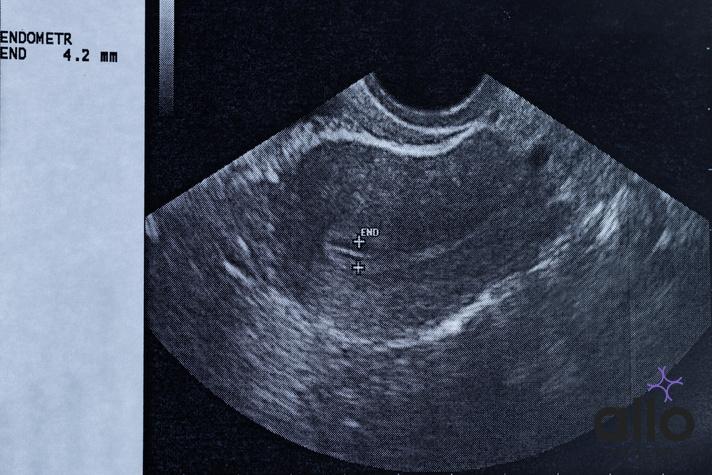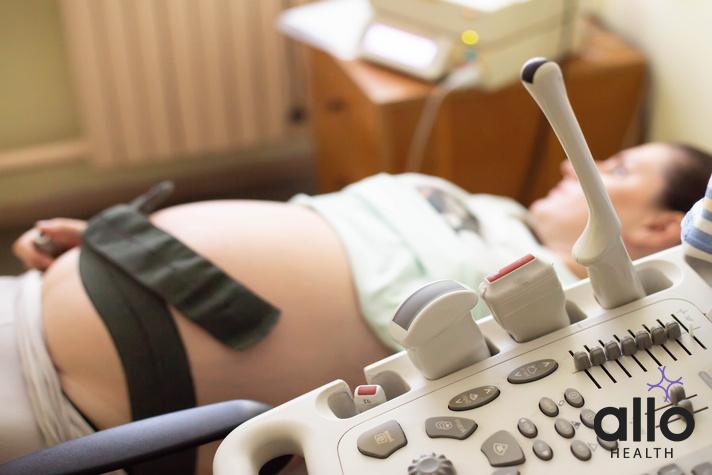AUA in Pregnancy: What Does it Mean for Expecting Parents?

Allo Health is dedicated to personalized well-being, offering support and trusted information tailored to individual health goals. The platform emphasizes human-generated content, led by a distinguished medical team of experts, including physicians and sexual health specialists. Their commitment to credibility involves rigorous fact-checking, authoritative research, and continuous updates to ensure accurate, up-to-date information. Allo Health's unique approach goes beyond conventional platforms, providing expert-led insights and a continuous commitment to excellence, with user feedback playing a crucial role in shaping the platform's authoritative voice.

Dr. Aditi completed her undergraduate medical education at AJIMS, Mangalore, after which she worked in multi-speciality hospitals with COVID patients and in the Pain and Palliative medicine department. Driven by her experiences, she developed a keen interest in psychiatry. Dr. Aditi believes that mental health is just as, if not more important, than physical health.
Why This Was Upated?
Our experts continually monitor the health and wellness space, and we update our articles when new information became available.
Updated on 15 April, 2024
- Article was updated as part of our commitment to diversity, equity, and inclusion.

"The following blog article provides general information and insights on various topics. However, it is important to note that the information presented is not intended as professional advice in any specific field or area. The content of this blog is for general educational and informational purposes only.
Book consultation
The content should not be interpreted as endorsement, recommendation, or guarantee of any product, service, or information mentioned. Readers are solely responsible for the decisions and actions they take based on the information provided in this blog. It is essential to exercise individual judgment, critical thinking, and personal responsibility when applying or implementing any information or suggestions discussed in the blog."
Pregnancy is a journey filled with numerous medical tests and scans aimed at ensuring the health and well-being of both the expectant mother and her developing baby. During this journey, you may come across medical jargon and acronyms that might leave you bewildered. One such term often encountered in prenatal scans is “AUA.” In this article, we will explore the meaning of AUA in the context of pregnancy and unravel why your due date based on AUA might differ from your gestational age due date.
Understanding Pregnancy
Pregnancy, medically referred to as gestation, is the period during which one or more offspring develop inside a woman’s body. In cases of multiple pregnancies, such as with twins, there is more than one developing offspring. Typically, pregnancy results from sexual intercourse, but it can also occur through assisted reproductive technology procedures. Childbirth usually takes place around 40 weeks from the commencement of the last menstrual period (LMP), which roughly translates to a little over nine months in terms of gestational age, with each month averaging about 31 days.
When considering fertilization age, the duration is approximately 38 weeks. An embryo is the term used to describe the developing offspring during the initial eight weeks following fertilization, which is equivalent to ten weeks in terms of gestational age. After this period, the term “fetus” is employed to describe the developing offspring until birth.
Ultrasound Measurements – The Gold Standard For Pregnancy Tracking
Ultrasound measurements serve as a dependable and precise means of gauging a fetus’s gestational age throughout pregnancy. In the first trimester of pregnancy, these ultrasound measurements are employed to establish the fetus’s gestational age. This determination hinges on specific criteria like crown-rump length (CRL), biparietal diameter (BPD), femur length (FL), abdominal circumference (AC), and head circumference (HC).
Ultrasound stands out as one of the most accurate methods for ascertaining fetal age, boasting a precision rate within a margin of ± 10-14 days between 22 0/7 weeks and 27 6/7 weeks of gestation. This approach significantly outperforms reliance solely on a patient’s last menstrual period (LMP) for estimating due dates.

What Does the Term “Due Date” Mean?
The due date is calculated as either 40 weeks (equivalent to 280 days) from the onset of your last menstrual period or 38 weeks (266 days) from the time of ovulation. Even if an early ultrasound is employed to ascertain or modify your due date, it remains rooted in the fundamental concept of a 280-day gestational period.
Why is Establishing an Estimated Due Date Important?
These days, pregnant women usually know exactly how many weeks pregnant they are and when their baby is expected to arrive. This isn’t just because they’re excited about the baby’s birth. It’s because, from the moment they confirm they’re pregnant, all the focus is on making sure the baby is growing properly.
Knowing the due date is important because it helps doctors and nurses know if the baby is growing as expected. This expected growth is based on what’s typical for each week of pregnancy. In nine months, babies change and grow a lot.
Doctors have learned a ton about how babies develop over many years. That’s how they know that by the tenth week, babies have all their organs, even though they might not be working perfectly yet. Getting the due date right is really important to make sure the mom and baby have a healthy pregnancy and birth.
A “dating ultrasound scan” is a special ultrasound test that helps figure out how old the baby is in the womb. It also tells us other things like how many babies there are, if the baby’s heart is beating, and how big the baby is. It can even show if there’s something unusual about the mom’s uterus.

What is the Significance of AUA on a Scan Report?
“AUA” on a scan result stands for “Actual Ultrasound Age.” It refers to the age of the baby from the moment of conception, based on measurements taken during an ultrasound scan. This term is used to determine the baby’s developmental age, which can sometimes differ from the gestational age calculated from the first day of the mother’s last menstrual period (LMP). The AUA provides a more accurate estimate of fetal development, accounting for variations in menstrual cycle length and the exact timing of conception. This information is important for tracking the baby’s growth and ensuring the most precise due date possible.
The Gestational Age vs. Actual Ultrasound Age
The gestational age and actual ultrasound age are two distinct ways of measuring a baby’s age during pregnancy.
- Gestational Age: This term refers to the age of the baby calculated from the first day of the mother’s last menstrual period (LMP). It is a standard method for dating a pregnancy and is usually expressed in weeks and days. For instance, if your LMP was six weeks ago, you would be considered six weeks gestational age. This method assumes a regular 28-day menstrual cycle and that conception occurs approximately two weeks after the start of your last period, even though this isn’t precisely accurate for every woman.
- Actual Ultrasound Age (AUA): AUA, on the other hand, is determined by measuring the baby’s size and development during an ultrasound scan. This method calculates the age of the baby from the exact moment of conception. It is considered a more precise method because it takes into account the individual variations in menstrual cycle length and the specific timing of conception. Therefore, the AUA can sometimes be different from the gestational age, providing a more tailored estimate of fetal development.
In summary, the main difference between these two measurements lies in how they determine the baby’s age: gestational age is based on the first day of the mother’s last menstrual period, while AUA is based on the actual measurements of the baby during an ultrasound scan, considering the exact time of conception.
Is ultrasound a more precise method for determining the due date?
The most accurate way to estimate your baby’s due date is through first-trimester dating. During this scan, your baby’s size is measured, providing the most reliable estimate of their age based on their developmental stage.
The earlier a dating ultrasound is conducted, the more precise the estimated due date becomes. Typically, first-trimester ultrasounds (performed within the first 12 weeks) are accurate within a range of 3 to 5 days.
For the utmost accuracy, the optimal timing for the ultrasound is between 8 and 11 weeks of gestation. During this period, the baby undergoes rapid growth, making size differences more discernible.
As babies continue to develop, they start to display individual growth rates. Consequently, their size becomes a less dependable indicator of their actual age as time progresses.
This leads to the practice of not using ultrasounds conducted after 22 weeks of gestation to estimate due dates because the baby’s size no longer reliably reflects their real age. In fact, even babies with average growth can show variations of up to 2-3 weeks in their development.

Why the Discrepancy in Due Dates?
The discrepancy in due dates between gestational age and actual ultrasound age (AUA) arises primarily due to the different methods of calculation and the unique factors associated with each.
- Gestational Age Due Date: This due date is typically calculated based on the first day of the mother’s last menstrual period (LMP). It assumes a regular 28-day menstrual cycle and that conception occurred approximately two weeks after the start of the last period. However, not all women have a 28-day cycle, and the timing of conception can vary widely, making this method less precise.
- Actual Ultrasound Age (AUA) Due Date: The AUA due date, in contrast, takes into account the actual measurements of the developing fetus during an ultrasound scan. It calculates the age of the baby from the precise moment of conception, offering a more individualized estimate. This approach is more accurate because it considers the specific timing of conception and accommodates variations in menstrual cycle lengths.
Because the AUA due date is determined by direct measurements, it often provides a more accurate prediction of fetal development. This can lead to a difference in due dates compared to the gestational age method.
In summary, the discrepancy in due dates occurs because the gestational age due date is based on a standardized formula that may not account for individual variations in menstrual cycles, whereas the AUA due date is based on direct measurements of the baby’s development, providing a more personalized estimate. Health care provider typically use both methods to ensure the most accurate assessment of when the baby is expected to arrive.
Conclusion
In conclusion, the terms “AUA” (Actual Ultrasound Age) and “gestational age” are two different ways to measure the age of a developing fetus during pregnancy. The key distinction lies in how they calculate the baby’s age and subsequently the due date.
The gestational age is determined from the first day of the mother’s last menstrual period (LMP). It assumes a standard 28-day menstrual cycle and conception occurring about two weeks after the LMP. However, this method may not account for variations in menstrual cycle length and the exact timing of conception, resulting in potential discrepancies.
On the other hand, the AUA, or Actual Ultrasound Age, is calculated from the measurements taken during an ultrasound examination, considering the precise moment of conception. This approach provides a more personalized estimate of fetal development, accommodating individual differences in menstrual cycles. Consequently, it may yield a different due date compared to the gestational age method.
In practice, both due dates are considered by healthcare providers to offer a more comprehensive view of the pregnancy timeline. The AUA due date, with its focus on direct measurements, is often favored for its accuracy in assessing fetal development. However, it’s essential to remember that the exact due date is an estimate, and babies may arrive when they are ready. Understanding the nuances of these terms can help expectant parents navigate their pregnancy journey with greater clarity and assurance.

Frequently Asked Questions
- What does AUA mean in the context of pregnancy?
AUA stands for “Actual Ultrasound Age.” It refers to the age of the baby from the moment of conception, determined based on ultrasound measurements during pregnancy.
- How is AUA different from gestational age?
Gestational age is calculated from the first day of the mother’s last menstrual period (LMP), assuming a 28-day cycle. AUA, in contrast, calculates the age of the fetus based on ultrasound measurements and the precise timing of conception.
- Why might there be a difference between AUA and gestational age?
Differences in due dates can occur because gestational age is a standardized calculation that may not account for variations in menstrual cycle length and the specific timing of conception. AUA offers a more individualized estimate.
- Which due date should I consider for my pregnancy?
Healthcare providers typically consider both due dates. The AUA due date is often preferred for its accuracy, but the gestational age due date is also important and is based on historical data from the last menstrual period.
- Can the AUA due date change during pregnancy?
The AUA due date is determined by ultrasound measurements taken during early pregnancy. It may be adjusted if subsequent ultrasound measurements indicate variations in the baby’s growth and development, ensuring the most accurate prediction of the baby’s arrival.






































